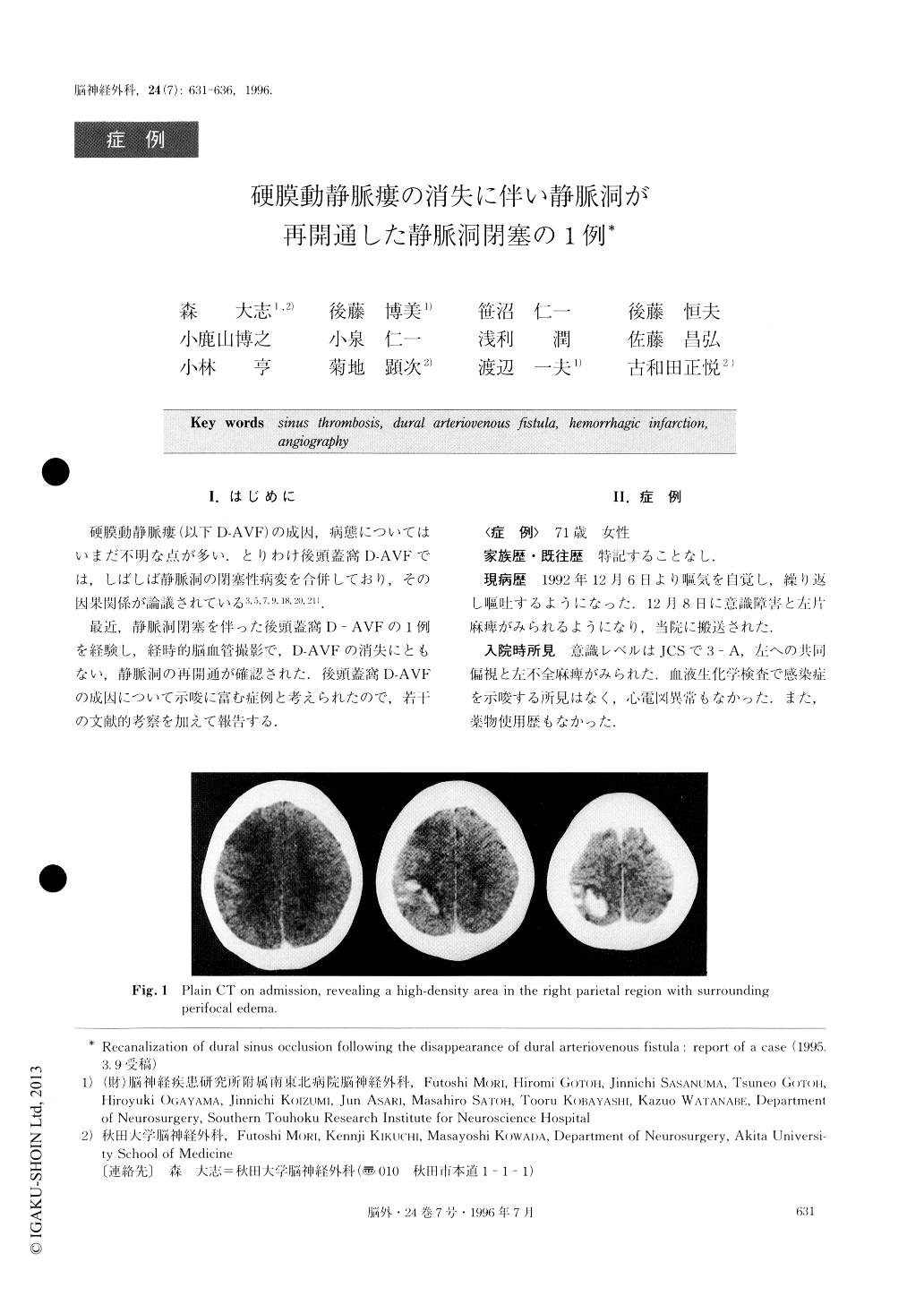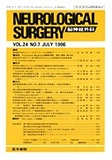Japanese
English
- 有料閲覧
- Abstract 文献概要
- 1ページ目 Look Inside
I.はじめに
硬膜動静脈瘻(以下D-AVF)の成因,病態についてはいまだ不明な点が多い.とりわけ後頭蓋窩D-AVFでは,しばしば静脈洞の閉塞性病変を合併しており,その因果関係が論議されている3,5,7,9,18,20,21).
最近,静脈洞閉塞を伴った後頭蓋窩D-AVFの1例を経験し,経時的脳血管撮影で,D-AVFの消失にともない,静脈洞の再開通が確認された.後頭蓋窩D-AVFの成因について示唆に富む症例と考えられたので,若干の文献的考察を加えて報告する.
A 73-year-old female was admitted to our hospital because of disturbed consciousness and left-sided motor weakness. Computed tomographic scans demonstrated a hemorrhagic infarction in the right parietal region. Right carotid angiograms showed both the posterior portion of the superior sagittal sinus (SSS) and the en-tire left transverse sinus simultaneously occluded. Left carotid angiograms revealed an enlarged occipital artery, which had direct communications to the left sig-moid sinus and the superior petrosal sinus. These find-ings were consistent with dural arteriovenous fistula (D-AVF). The laboratory examinations yieled normal results. The patient was managed conservatively with glyceol and anticonvulsants for four weeks and even-tually recovered with complete resolution of hemi-paresis. Follow-up angiography carried out 6 weeks la-ter showed the SSS, partially stenotic, but recanalized with no evidence of venous congestion. The D-AVF still remained opacified, but there was a marked reduc-tion in retrograde flow to the sigmoid sinus. Further re-peated angiograms obtained at 10 months after the onset confirmed complete recanalization of the SSS and disappearance of the D-AVF. From the timing of the angiographies, we considered that the sinus occlusion was caused by the high arterial flow to the fistula and its disappearance made recanalization of SSS possible.

Copyright © 1996, Igaku-Shoin Ltd. All rights reserved.


